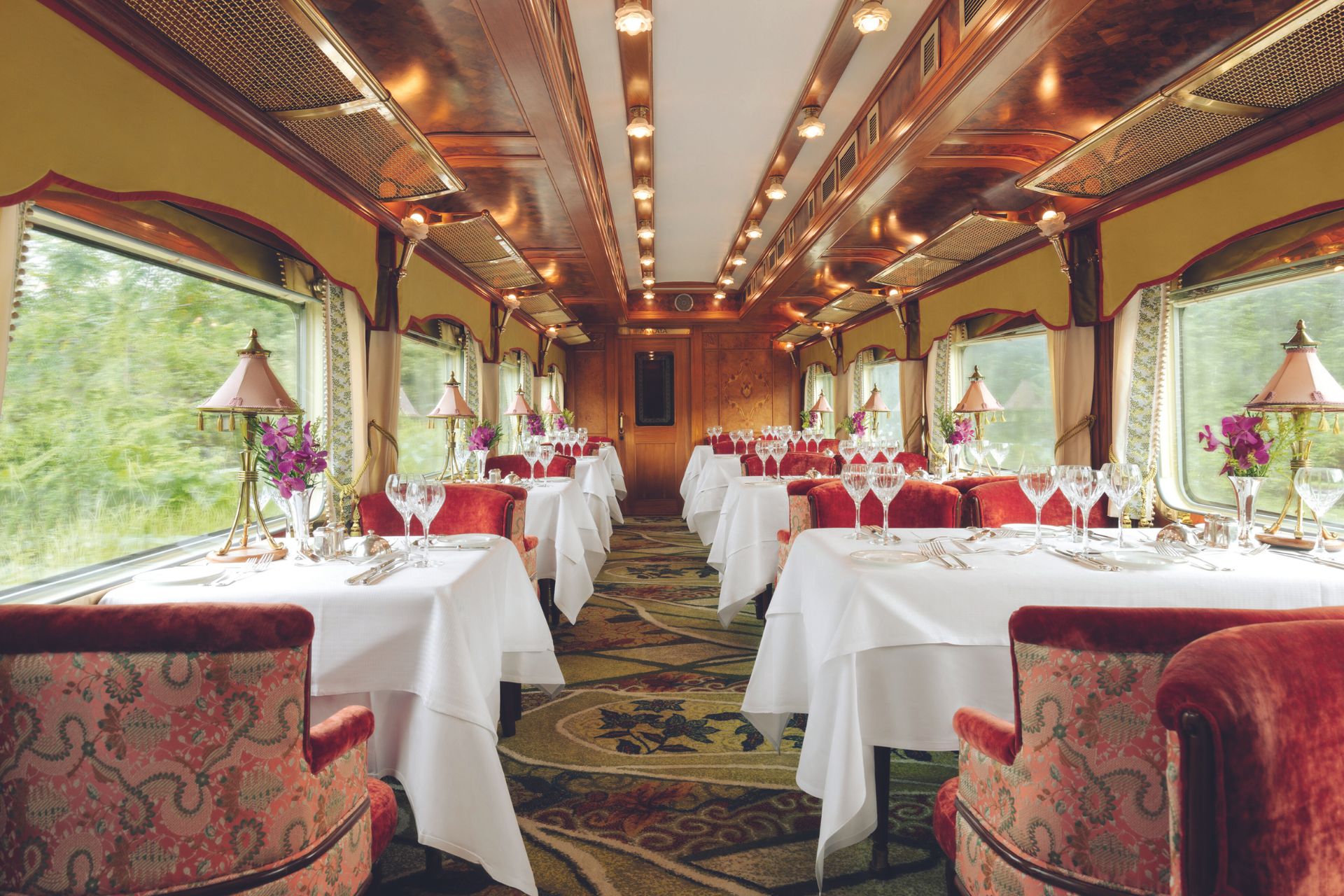Inside The Brand New Eastern & Oriental Express
By
9 months ago
Discover Singapore and Malaysia by train

The Eastern & Oriental Express is back after a five-year break. Lauren Ho climbs aboard.
Review: The Eastern & Oriental Express

(c) Ludovic Balay
It’s mid morning in central Malaysia and the temperature is already creeping upwards of 30 degrees. As I step off the train and onto the platform at Merapoh station, the air is steamy, heavy with moisture. Beyond, the jungle-shrouded limestone mountains loom majestically, disappearing serenely into a blanket of mist.
I woke up on board the Eastern & Oriental Express, the iconic 15-carriage train that chugs north through the wilds of Malaysia from Singapore and back again. I’d boarded the previous day on one of the train’s first journeys following a five-year hiatus and refurbishment, on a three-night itinerary heading up towards Penang. The bones of the train have remained unchanged, including the three different cabin categories – Pullman, State and Presidential – the dining carriages, Piano Bar, and the renowned open-air Observation Car.

(c) Ludovic Balay
Lined with the same handsome cherrywood and elm burr panelling and ornate marquetry details, the interiors still retain the train’s romantic opulence, but with a fresh colour palette inspired by the lush Malaysian landscapes and vibrant cities along the route. The State Cabin, for example, reflects Penang’s seaside location and painted shophouses with a vibrant blue and green colour palette in plush velvets and silks. At night, the sofas and chairs convert into two floor-level single beds, but by day, it makes for a dreamy spot from which to watch the ever-changing scenes – the thickets of emerald green jungle interspersed with charming villages and towns that line the track.
Along the journey, lazy afternoons are broken up by perfectly executed mid-morning excursions with an immersive, cultural component. Breakfast is served in your cabin by your steward, while lunch and dinner are taken in the two central dining carts that transport guests to a golden age of travel with tables that are dressed with meticulously pressed white tablecloths, ornate lamp shades, silverware and crystal glasses. A refined and lavish setting to sink into and watch the world go by while dining on regionally inspired dishes that use locally sourced ingredients – such as the fragrant laksa bouillabaisse – by the much celebrated chef, André Chiang, the train’s new Culinary Curator.

(c) Ludovic Balay
On our final day, we hopped onto trishaws and headed into George Town, the capital of Penang. As our driver slowly pedalled us along crowded streets lined with a lively mishmash of trendy boutique shops, vibrant street art, crumbling colonial buildings and colourful shophouses, he points out some of the town’s highlights, explaining that George Town was the first British settlement in Southeast Asia. The air fragrant with the tantalising aromas of street food being cooked on sizzling woks, we make our way back to the train for a cocktail. I can’t think of anywhere else I’d rather be.
BOOK IT
The Wild Malaysia itinerary costs from $3,410 per person for three nights in a Pullman Cabin. belmond.com
Return flights to Kuala Lumpa have a carbon footprint of 3,136 CO2e. ecollectivecarbon.com






